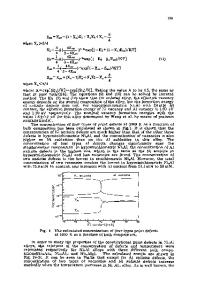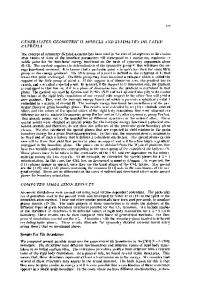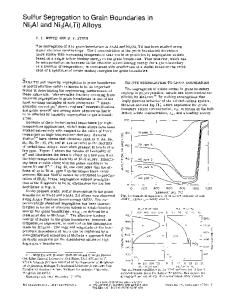Grain Structure Formation in Ni 3 Al Intermetallic Compound Synthesized Under High-Temperature and Pressure Conditions
- PDF / 367,325 Bytes
- 8 Pages / 595 x 794 pts Page_size
- 107 Downloads / 357 Views
GRAIN STRUCTURE FORMATION IN Ni3Al INTERMETALLIC COMPOUND SYNTHESIZED UNDER HIGH-TEMPERATURE AND PRESSURE CONDITIONS V. E. Ovcharenko,1 O. V. Lapshin,2 K. O. Akimov,1 and A. A. Kozulin1
UDC 536.46. 539.219.3
The paper presents theoretical and experimental results of studying the grain structure formation of the Ni3Al intermetallic compound produced by self-propagating high-temperature synthesis (SHS) under the pressure and volume exothermic reaction conditions, in a stoichiometric powder mixture. It is shown that the grain size in the SHS-produced intermetallic compound depends on both the preliminary load on the powder mixture and the SHS product deformation during its crystallization. It is found that the increased pressure on the initial powder mixture reduces the grain size in the bulk of the SHS-produced intermetallic compound, whereas its deformation provides a manifold decrease of the grain size at a simultaneous averaging of its distribution in the bulk of the SHS product obtained under pressure. Keywords: Ni3Al, self-propagating high-temperature synthesis, pressure, synthesis product, grain size, numerical modeling.
INTRODUCTION Among a wide range of aluminides, the Ni3Al intermetallic compound is characterized by the high resistance to heat, creep, corrosion, and oxidation, that determine its application in the metallurgy of modern heat-resistant alloys for aerospace and rocket production engineering. The Ni3Al intermetallic compound has significant commercial potential as a component of catalytic alloys and composite materials, including cutting tools and products operating at hightemperatures in mechanical engineering and corrosion-resistant materials used in chemical industry [1, 2]. A wider use of the Ni3Al intermetallic compound in hi-tech engineering is substantively restricted by its low plasticity in the higher temperature range provided by the grain-boundary brittleness of Ni3Al [3]. Low plasticity is a key problem of the development of promising intermetallic alloys and composites, that can be solved by different hi-tech methods applied in certain service conditions. These methods include alloying with ruthenium, boron, oriented crystallization, and growth of single-crystal products [4–6]. It is also known that the enhanced Ni3Al plasticity and, consequently, strength can be obtained through its grain structure refinement. Thus, when the grain size is reduced to less than 10 µm, the plasticity, yield point and ultimate tensile strength increase, while at the submicron grain size and lower, these parameters increase manifold [7]. The fine grain structure of the intermetallic compound can be obtained by sintering of the ultra-fine powder, mechanical alloying [8], and thermomechanical treatment of the intermetallic compound under the deformation control [9]. The implementation of these processing techniques for the fine grain structure of the Ni3Al intermetallic compound requires considerable production costs in case of technology problems with quality of end products [10].
1
Institute of Stre
Data Loading...











